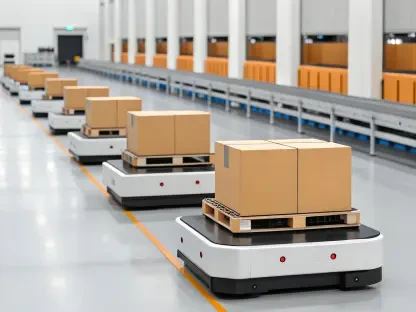What happens when two economic giants join forces to tackle global trade challenges head-on? Picture a partnership that not only slashes tariffs but also pours billions into strategic industries, reshaping markets across the Pacific. The recently finalized trade agreement between the United States and South Korea does exactly that, marking a bold step forward in bilateral relations. This deal, cemented in November, isn’t just about numbers—it’s about building resilience in a world of supply chain chaos and geopolitical strain. Dive into the details of this transformative pact and discover what it means for businesses, consumers, and the global economy.
Why This Agreement Is a Big Deal
At a time when trade wars and economic uncertainty dominate headlines, this US-South Korea pact emerges as a rare symbol of collaboration. It builds on a historic alliance, addressing modern hurdles like disrupted supply chains and fierce industrial competition. With South Korea’s dominance in sectors like semiconductors and automotive, and the US pushing to strengthen its domestic markets, the timing of this agreement couldn’t be more crucial. It signals a shared commitment to stability, offering a blueprint for how nations can navigate turbulent economic waters together.
The significance extends beyond mere policy. This deal impacts millions of jobs, from factory workers in Detroit to tech innovators in Seoul. Analysts predict a potential 10% surge in bilateral trade volume within the first year, a figure that underscores the scale of opportunity. More than just a transaction, it’s a strategic move to secure economic footholds in an unpredictable global landscape, setting a precedent for other nations watching closely.
Breaking Down the Core Provisions
The heart of this agreement lies in its carefully crafted provisions, balancing protection with market access. A standout feature is the US commitment to cap tariffs on South Korean imports at 15%, covering critical goods like cars, timber, and auto parts under Section 232 levies. This ceiling ensures predictability for exporters, shielding them from unexpected cost spikes even if sector-specific duties are added. It’s a pragmatic approach designed to keep trade flowing smoothly.
Additionally, future tariffs on pharmaceuticals will also be limited to 15%, while semiconductor tariffs will mirror terms offered to comparable trade partners, ensuring fairness across the board. South Korea, in return, has agreed to dismantle a 50,000-unit cap on US vehicles meeting American safety standards, allowing seamless entry without extra inspections. Non-tariff barriers on US agricultural products are also being reduced, while the US will eliminate tariffs on generic pharmaceuticals and certain natural resources, fostering a reciprocal exchange of benefits.
Perhaps most striking is South Korea’s pledge of $350 billion in investments toward the US economy. Of this, $150 billion targets the shipbuilding sector, with the remaining $200 billion allocated to strategic industries. These commitments highlight a deeper integration, promising to bolster key US sectors while strengthening economic ties. Early projections suggest this could spark significant job growth and innovation in both nations.
Voices from the Negotiation Table
Leaders on both sides have hailed this deal as a milestone in economic partnership. During the APEC summit in Seoul in October, US President Donald Trump described the agreement as “pretty much finalized,” emphasizing its role in fortifying bilateral ties. His enthusiasm reflects a broader recognition of the pact’s potential to counter global trade headwinds with a unified front.
South Korean President Lee Jae Myung echoed this sentiment, stating, “This agreement secures our exporters’ access to the US market while driving growth at home through shared investments.” His words underscore the mutual advantages baked into the deal. Trade experts have also weighed in, with the Peterson Institute for International Economics estimating that the tariff caps could stabilize costs for South Korean firms by up to 12% annually, a tangible win for businesses navigating volatile markets.
Real-world perspectives add further depth. A Michigan-based auto supplier recently shared optimism about smoother exports to Seoul, noting that the removal of vehicle caps could boost their shipments by 20% in the coming months. Such stories illustrate how high-level negotiations translate into concrete outcomes for industries and workers on the ground, bridging policy with practice.
Impacts on Businesses and Everyday Consumers
For companies on both sides of the Pacific, this deal opens new doors while demanding strategic adjustments. US exporters in automotive and agricultural sectors should prioritize compliance with South Korean market rules, now simplified by reduced barriers. Teaming up with local distributors could amplify reach, especially as demand for American goods grows in these newly accessible markets.
South Korean firms, meanwhile, must integrate the 15% tariff ceiling into their pricing models, particularly for goods under Section 232 levies. Staying updated on semiconductor and pharmaceutical tariff developments will be key for long-term planning. Investors also have a unique opportunity to tap into the $350 billion South Korean investment pipeline, especially in shipbuilding, by forging connections with US industry councils for potential collaborations.
Consumers stand to gain as well, with more competitive pricing on imported goods like electronics and vehicles expected as trade costs stabilize. Keeping abreast of product availability through industry updates will help households make informed purchasing decisions. This agreement, at its core, reshapes the economic landscape, offering benefits that ripple from boardrooms to living rooms.
Navigating the New Trade Terrain
Stakeholders across the spectrum can take actionable steps to maximize the advantages of this pact. Businesses should align their operations with the revised trade rules, whether it’s streamlining export processes or recalibrating cost structures to account for tariff limits. For those in strategic sectors, exploring partnership opportunities tied to South Korea’s massive investment commitments could unlock significant growth.
Looking ahead, staying informed about evolving provisions—particularly in sensitive areas like semiconductors—will be essential for maintaining a competitive edge. Governments and industry bodies must also work to ensure these policies are implemented effectively, addressing any unforeseen challenges that arise. The foundation laid by this agreement offers a chance to build stronger, more resilient trade networks.
Reflecting on how this pact unfolded, it became clear that both nations prioritized mutual benefit over short-term gains. The negotiations, marked by compromise and forward-thinking, crafted a framework that stood as a counterpoint to global trade tensions. As the dust settled, the focus shifted to execution, with businesses and policymakers alike tasked with turning promises into progress. The next steps involve monitoring trade flows, refining investment strategies, and ensuring that the benefits reach all corners of society, paving the way for a more connected economic future.









